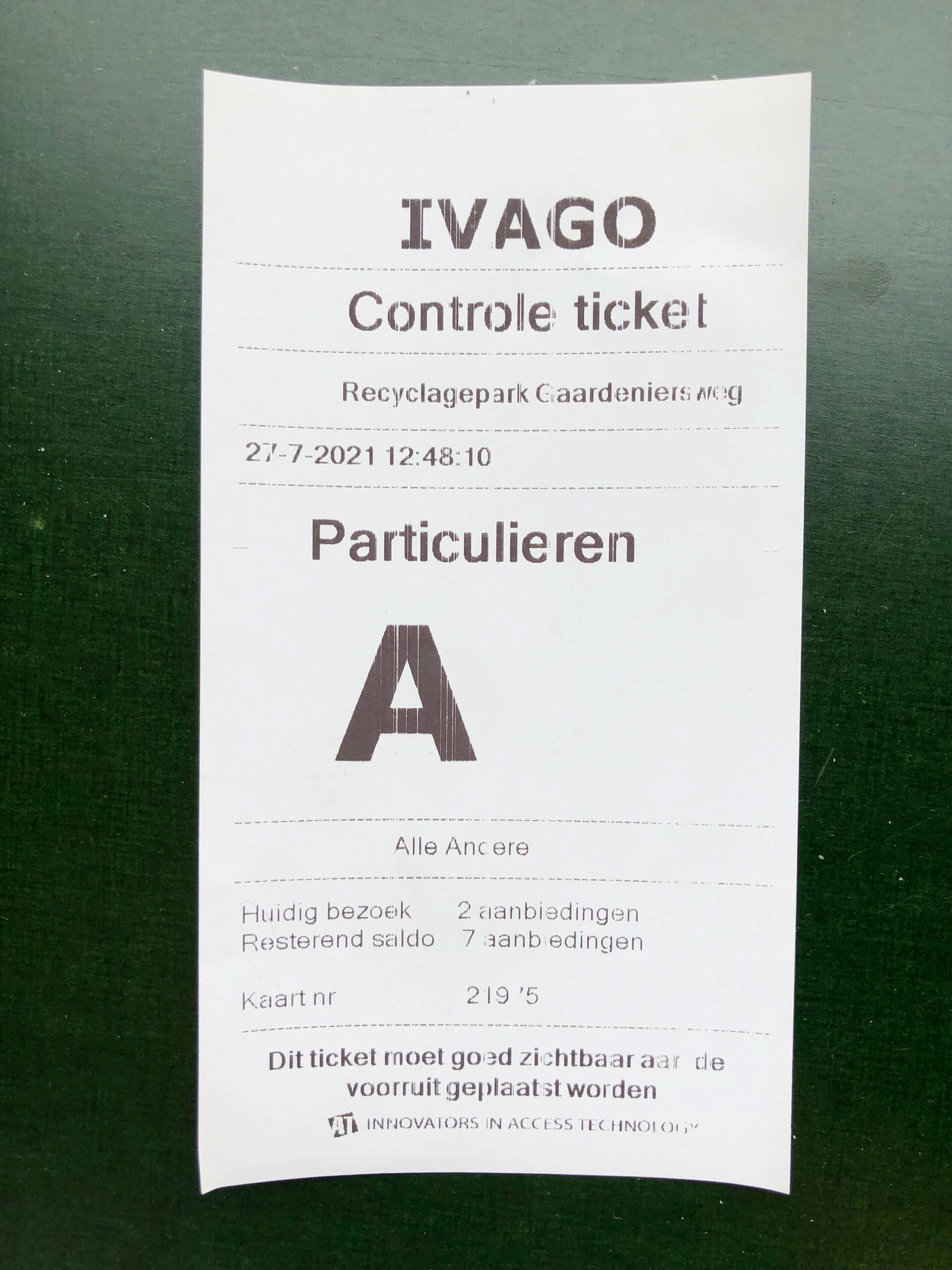What constitutes a ‘document’ and how does it function?
According to the Oxford English Dictionary, the etymological origin is the Latin ‘documentum’, meaning ‘lesson, proof, instance, specimen’. As a verb, it is ‘to prove or support (something) by documentary evidence’, and ‘to provide with documents’. The online version of the OED includes a draft addition, whereby a document (as a noun) is ‘a collection of data in digital form that is considered a single item and typically has a unique filename by which it can be stored, retrieved, or transmitted (as a file, a spreadsheet, or a graphic)’. The current use of the noun ‘document’ is defined as ‘something written, inscribed, etc., which furnishes evidence or information upon any subject, as a manuscript, title-deed, tomb-stone, coin, picture, etc.’ (emphasis added).
Both ‘something’ and that first ‘etc.’ leave ample room for discussion. A document doubts whether it functions as something unique, or as something reproducible. A passport is a document, but a flyer equally so. Moreover, there is a circular reasoning: to document is ‘to provide with documents’. Defining (the functioning of) a document most likely involves ideas of communication, information, evidence, inscriptions, and implies notions of objectivity and neutrality – but the document is neither reducible to one of them, nor is it equal to their sum. It is hard to pinpoint it, as it disperses into and is affected by other fields: it is intrinsically tied to the history of media and to important currents in literature, photography and art; it is linked to epistemic and power structures. However ubiquitous it is, as an often tangible thing in our environment, and as a concept, a document deranges.
the-documents.org continuously gathers documents and provides them with a short textual description, explanation,
or digression, written by multiple authors. In Paper Knowledge, Lisa Gitelman paraphrases ‘documentalist’ Suzanne Briet, stating that ‘an antelope running wild would not be a document, but an antelope taken into a zoo would be one, presumably because it would then be framed – or reframed – as an example, specimen, or instance’. The gathered files are all documents – if they weren’t before publication, they now are. That is what the-documents.org, irreversibly, does. It is a zoo turning an antelope into an ‘antelope’.
As you made your way through the collection,
the-documents.org tracked the entries you viewed.
It documented your path through the website.
As such, the time spent on the-documents.org turned
into this – a new document.
This document was compiled by ____ on 02.11.2023 22:14, printed on ____ and contains 17 documents on _ pages.
(https://the-documents.org/log/02-11-2023-5496/)
the-documents.org is a project created and edited by De Cleene De Cleene; design & development by atelier Haegeman Temmerman.
the-documents.org has been online since 23.05.2021.
- De Cleene De Cleene is Michiel De Cleene and Arnout De Cleene. Together they form a research group that focusses on novel ways of approaching the everyday, by artistic means and from a cultural and critical perspective.
www.decleenedecleene.be / info@decleenedecleene.be - This project was made possible with the support of the Flemish Government and KASK & Conservatorium, the school of arts of HOGENT and Howest. It is part of the research project Documenting Objects, financed by the HOGENT Arts Research Fund.
- Briet, S. Qu’est-ce que la documentation? Paris: Edit, 1951.
- Gitelman, L. Paper Knowledge. Toward a Media History of Documents.
Durham/ London: Duke University Press, 2014. - Oxford English Dictionary Online. Accessed on 13.05.2021.

A malfunctioning of the camera leading to a double-exposed negative. The car is decisive in establishing the relationship between the superimposed photographs. In the middle of the image, we see it parked in front of the house. Slightly less visible is the same car, repeated but further away. This makes it possible to deduce that the dark outline of the house, with the roof and the chimney, is also the same house as in the other photograph. This time, the house is photographed relatively frontally (the slightly angled point of view allows to bring the shed at the back of the house in the line of sight), and from nearby. At the bottom left, the lines that make up the street help to see the continuity of the one photograph, while the electric wires at the top right aid to comprehend the other one.
The camera malfunction speculates on a future addition to the plot. The dark, outlined shed’s scale is realistic with regards to the scale of the house and itself (the shed) in the other photograph. Its position with regards to the other buildings seems logical. It imposes itself as a possible second shed for the owner to build in the next few years. In that future shed, the car, now standing in front of the house, could be comfortably parked.

My dream hollyday We were a football
on the beach
We were a modern house.
We were a We swim in the swimming
pool.
June 2022, Marche-en-Famenne. I arrived half an hour early. Waiting for my family to pick me up at the station, near a linden tree, I found a yellow page lying on the pebbles in front of the wooden bench I sat on. It had been a hot day. The sun was finally setting. Music playing in the distance. A white Volkswagen. Windows closed. Hard basses, trembling across the road. Folded three times, the sheet of paper had the size of a DIN A7. A white BMW pulled over. Seven glass jars in a container.
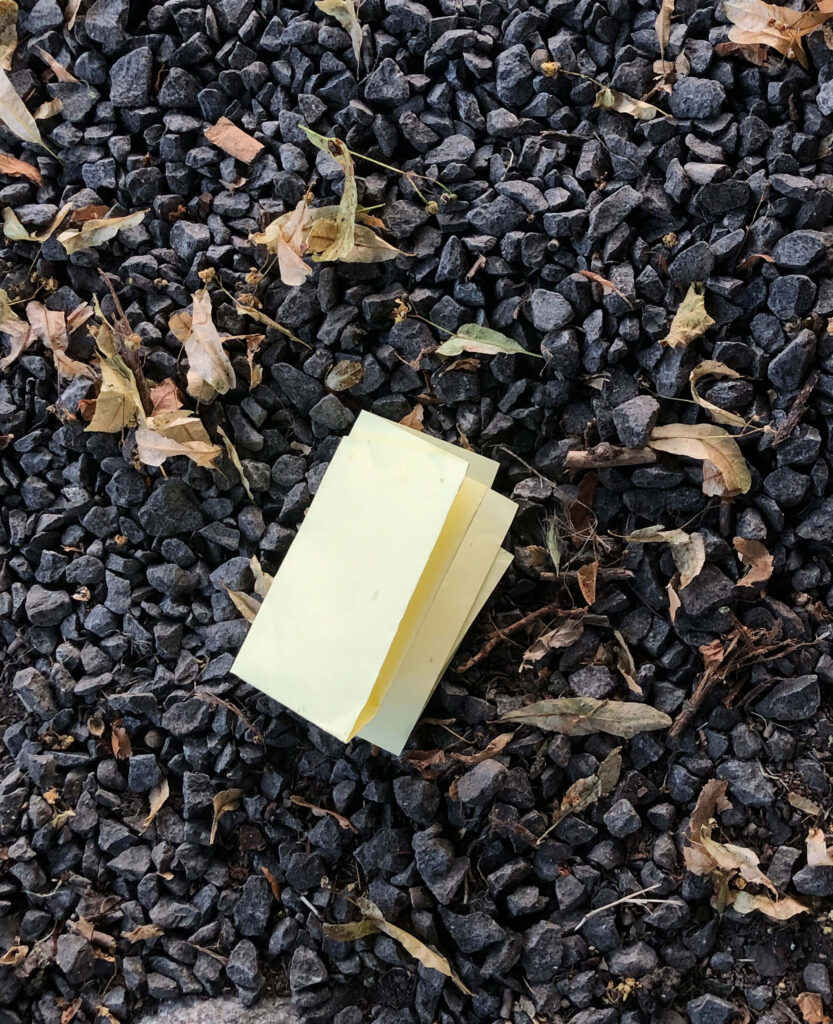
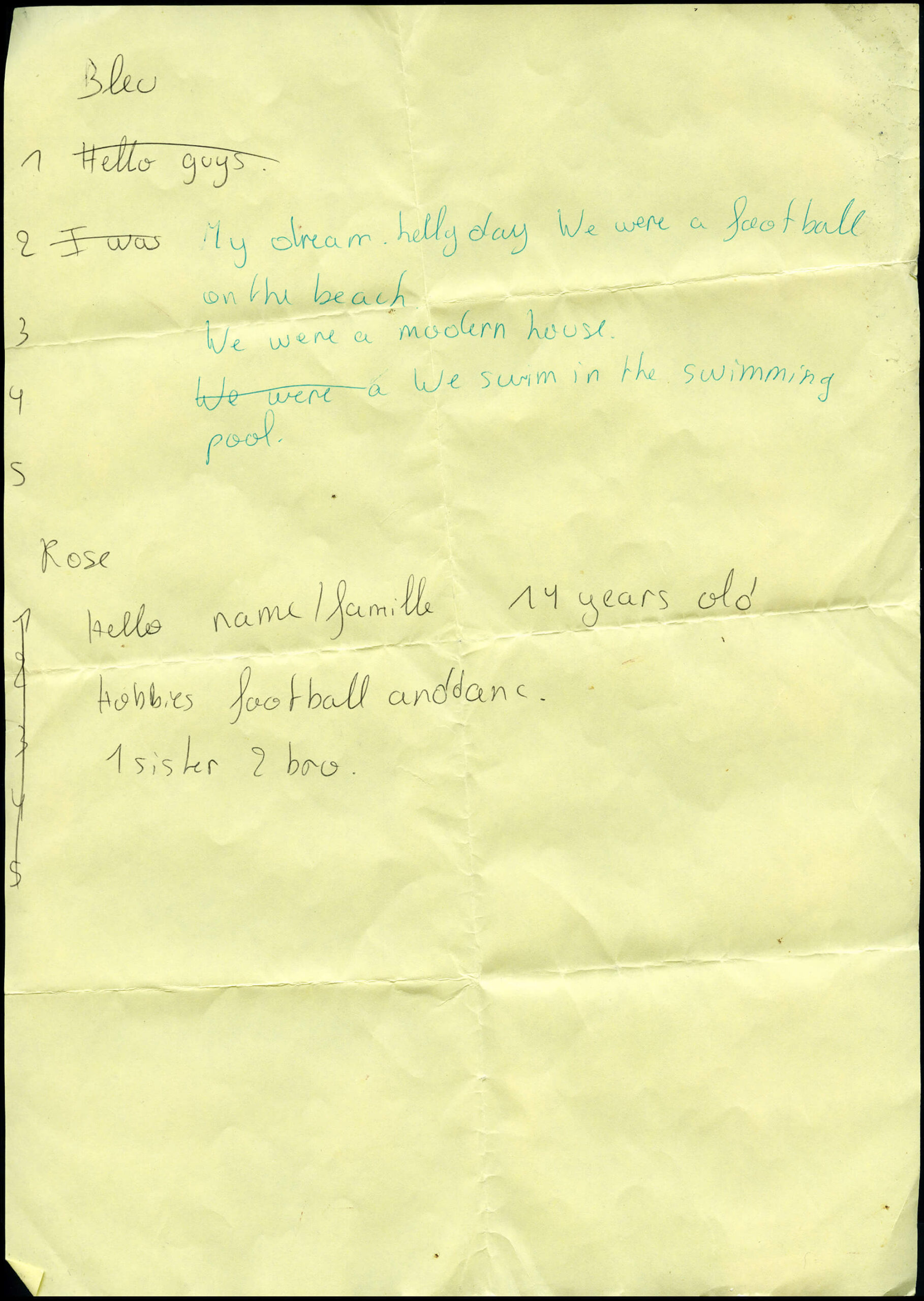
‘Meunerie Duyckers & Conors, les nouveaux moulins’, better known as ‘De Nieuwe Molens’, is a flour mill established in 1897 in the north of Gent along the Verbindingskanaal. Due to increased production, the original 1897 building doubled in 1904.
Only the facade of the iconic warehouse has been preserved along with the recently renovated gasometers. The building is now part of the Tondeliersite. It has been converted into lofts and flats, and was extended with a new construction.
https://inventaris.onroerenderfgoed.be/erfgoedobjecten/18269

During the preparation of a seminar, I reread Pierre Bayard’s Qui a tué Roger Ackroyd? (2008). On the inside of the back cover, there’s an inscription: it appears I wrote down a license plate number – something I have the habit of doing when a situation seems suspicious.
In Qui à tué Roger Ackroyd?, Bayard analyzes Agatha Christie’s famous detective novel The Murder of Roger Ackroyd (1926). The literary critic disagrees with detective Hercule Poirot’s conclusion: Ackroyd’s murderer is not the narrator, James Sheppard, as Poirot would have it. It’s a delirious interpretation, ‘consistant à rechercher minutieusement des indices, à interpréter des faits et à organiser nos déductions en une construction d’ensemble harmonieuse’.
The car with license plate number XHD 558 is unknown to me. I can’t recall what I saw that urged me to write it down, nor the time or location when I saw it.
Bayard, P. Qui a tué Roger Ackroyd? Paris: Minuit, 2008.
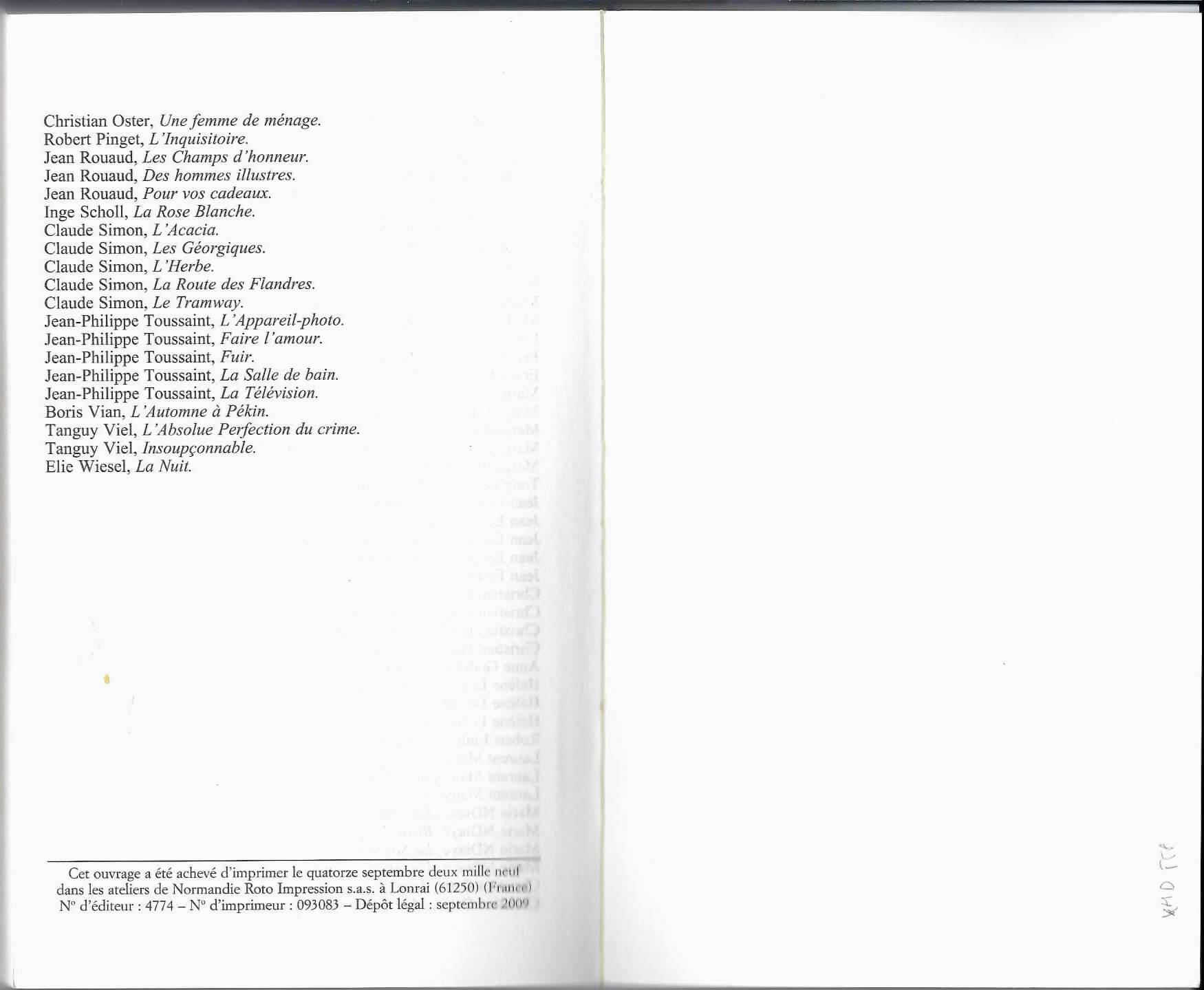
John from Middelburg offers a K-10 without a loop at the back on marktplaats.nl. His K-10 does have a front light, which strangely never seems to be mounted in the front of the long tube of the frame. The asking price is 75 euros, bids may start from 50 euros.
Lars Kwakkenbos lives and works in Brussels and Ghent (B). He teaches at KASK & Conservatorium in Ghent, where he is currently working on the research project ‘On Instructing Photography’ (2023-2024), together with Michiel and Arnout De Cleene.

On 12 October 2022, I see a third orange Sparta K-10 listed on marktplaats.nl, after Tineke and Fred‘s. It is sold by one Fr from Zevenaar. Fr put the bike up for sale four days earlier. According to Fr, it is a ‘luxury station bike’ and ‘camping bike’. He is asking 199 euros for it. Fr explains the bike as follows:
‘Luxury sparta unisex bike with 3-speed shimano-nexus.
Striking specimen.
Looks like new.
Please note……fixed price!
Ideal for station, camping or for some nice touring.
Equipped with:
Front and rear battery lighting
Handy front and rear luggage rack
All-terrain tyres
3-speed gearbox
Comfortable drifter saddle
Integrated cable lock
Large dingdong bell
A real eye-catcher’1
According to Fr, the price is fixed, but on the website you can make an offer, albeit only from 199 euros. Fr’s Sparta K-10 has three gears. The Sparta K-10s of Tineke, John and Fred that are still for sale do not have gears, the Sparta K-10s in Rue Verte in Brussels and on cyclonewebshop.be do not have them, and in the 2011 Sparta leaflet we did not see that option either. In short, we come across a Sparta K-10 with gears for the first time. There is a small typing error in Fr’s explanation in Dutch – the t in geïntegreerd is missing – but those who like to browse on marktplaats.nl read smoothly over that. One of the photos of Fr’s ad shows the loop attached to the back of the bike. You can clearly see how that loop forms the end of an integrated cable lock.
‘Luxe sparta unisex fiets met 3 versnellingen shimano-nexus.
Opvallend design exemplaar.
Ziet er uit als nieuw.
Let op……vaste prijs!
Ideaal voor station, camping of zo om lekker mee te toeren.
Voorzien van:
Batterijverlichting voor én achter
Handig bagagerek voor én achter
All terreinbanden
3 versnellingen
Verende zadelpen
Comfortabel drifter zadel
Geïnegreerd kabelslot
Grote dingdong bel
Een echte eye-catcher’
Lars Kwakkenbos lives and works in Brussels and Ghent (B). He teaches at KASK & Conservatorium in Ghent, where he is currently working on the research project ‘On Instructing Photography’ (2023-2024), together with Michiel and Arnout De Cleene.

A 250 meter walk away from the seaside. A sign states in Dutch and French:
‘!!! NO PARKING !!!
Wrongly parked cars will be chained and only released upon payment of a € 40 parking fee’
The 40 EUR parking fee the sign threatens to charge is communicated by a relatively new sticker stuck on an older sign. Underneath the three black characters (€, 4 and 0) on a white background, there’s a relief: 7 characters declaring a parking fee of 1500 BEF.
1500 BEF equals 37,18 EUR1. In changing currency, the fee increased by 7,58%.
The Belgian franc was the currency of the Kingdom of Belgium from 1832 until 2002 when the Euro was introduced. 1 EUR is worth 40,3399 BEF.
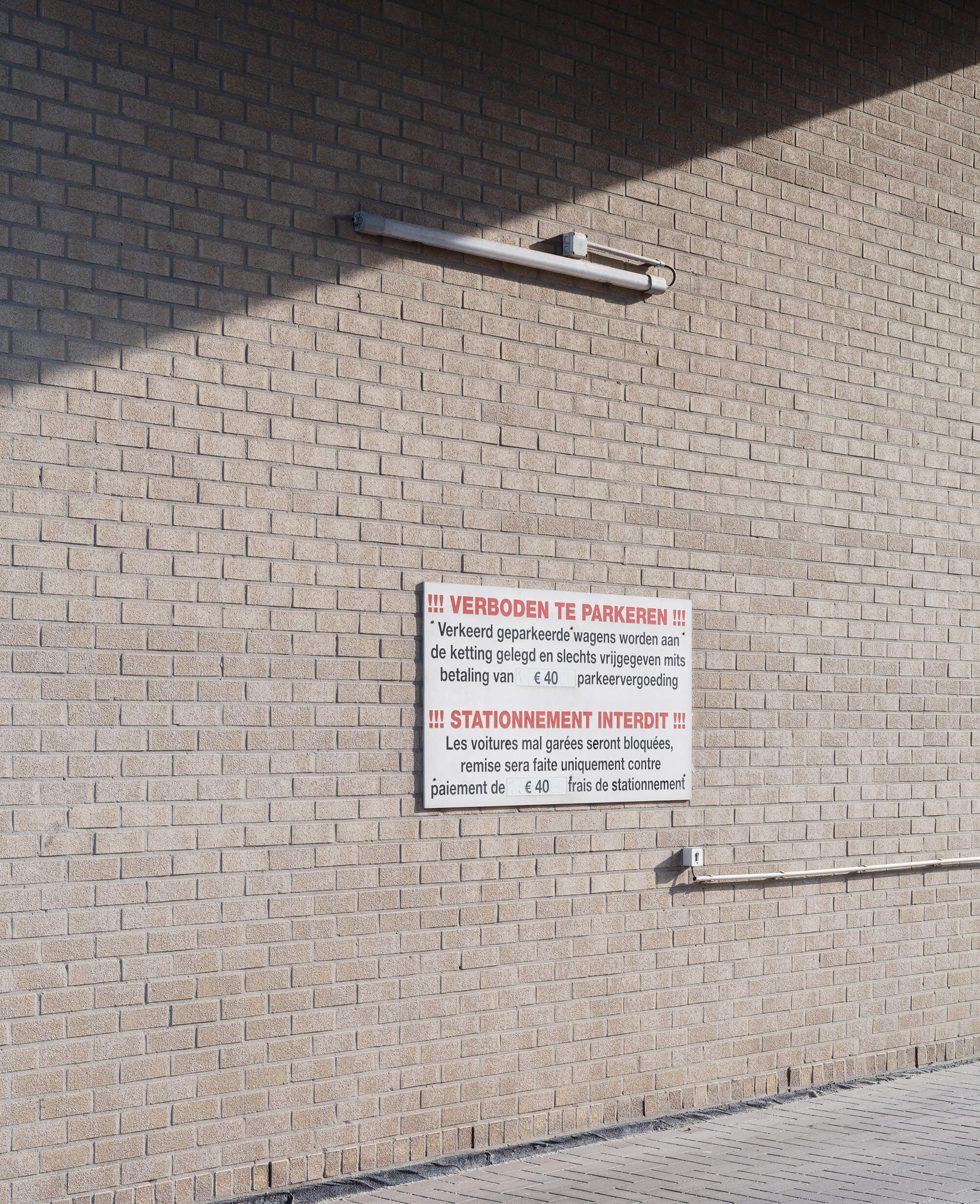
Shortly after crossing the Thur the couple reaches their car. They’re freezing. As the sun sets they drive through the mountainous landscape. The heating hurts their fingers.
The next day, they return, but the scene looks different. It’s warmer. The Thur appears to flow faster.

What they took for ice that slid down the dam’s slope, appears to be the reason for draining the reservoir: a fissure in the watertight layer. The dam became unreliable.
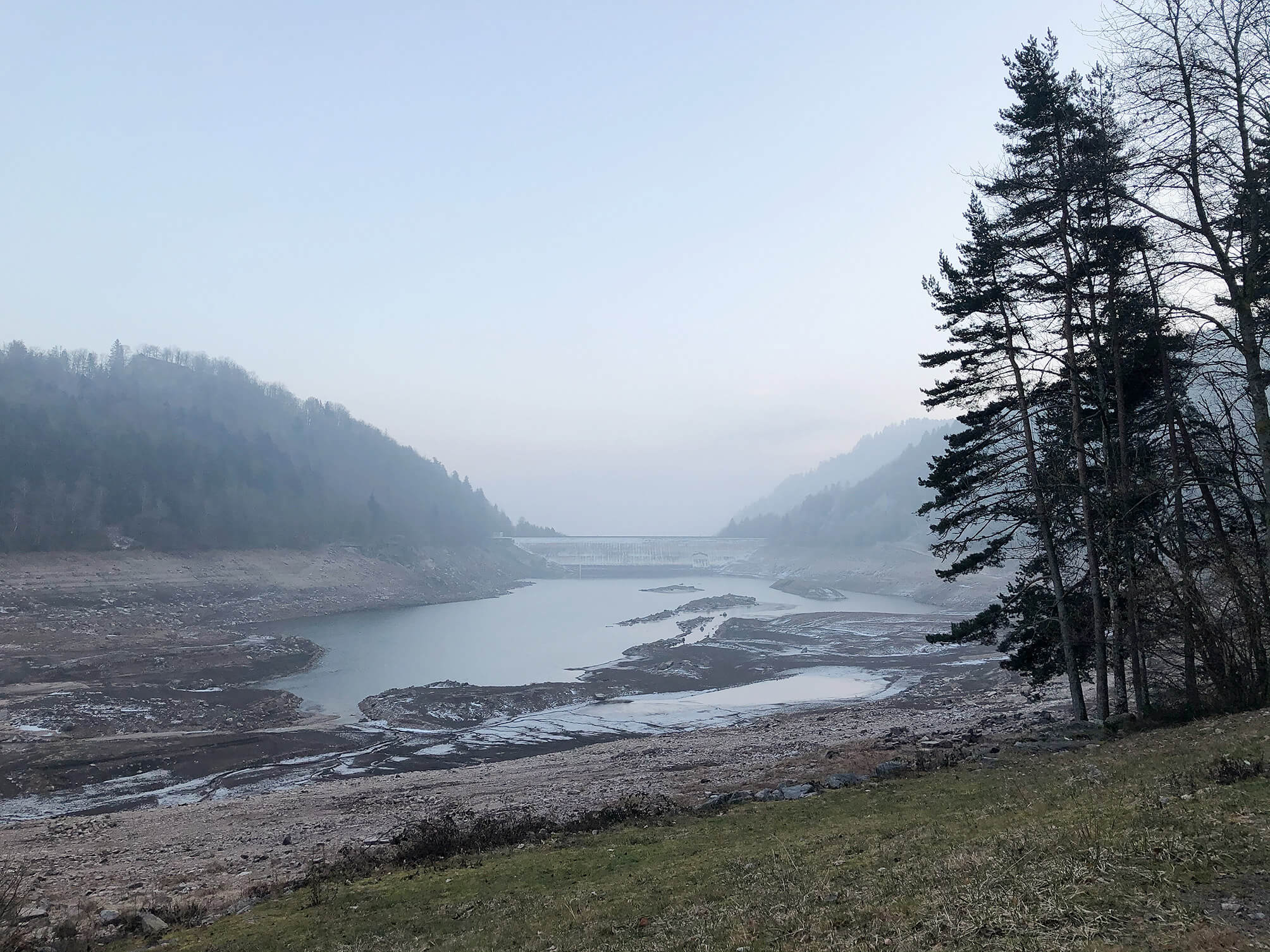
On January 23, 2020 a young couple walks around the drained reservoir of Kruth-Wildenstein.
It’s freezing. They’re expecting their first child within a month.
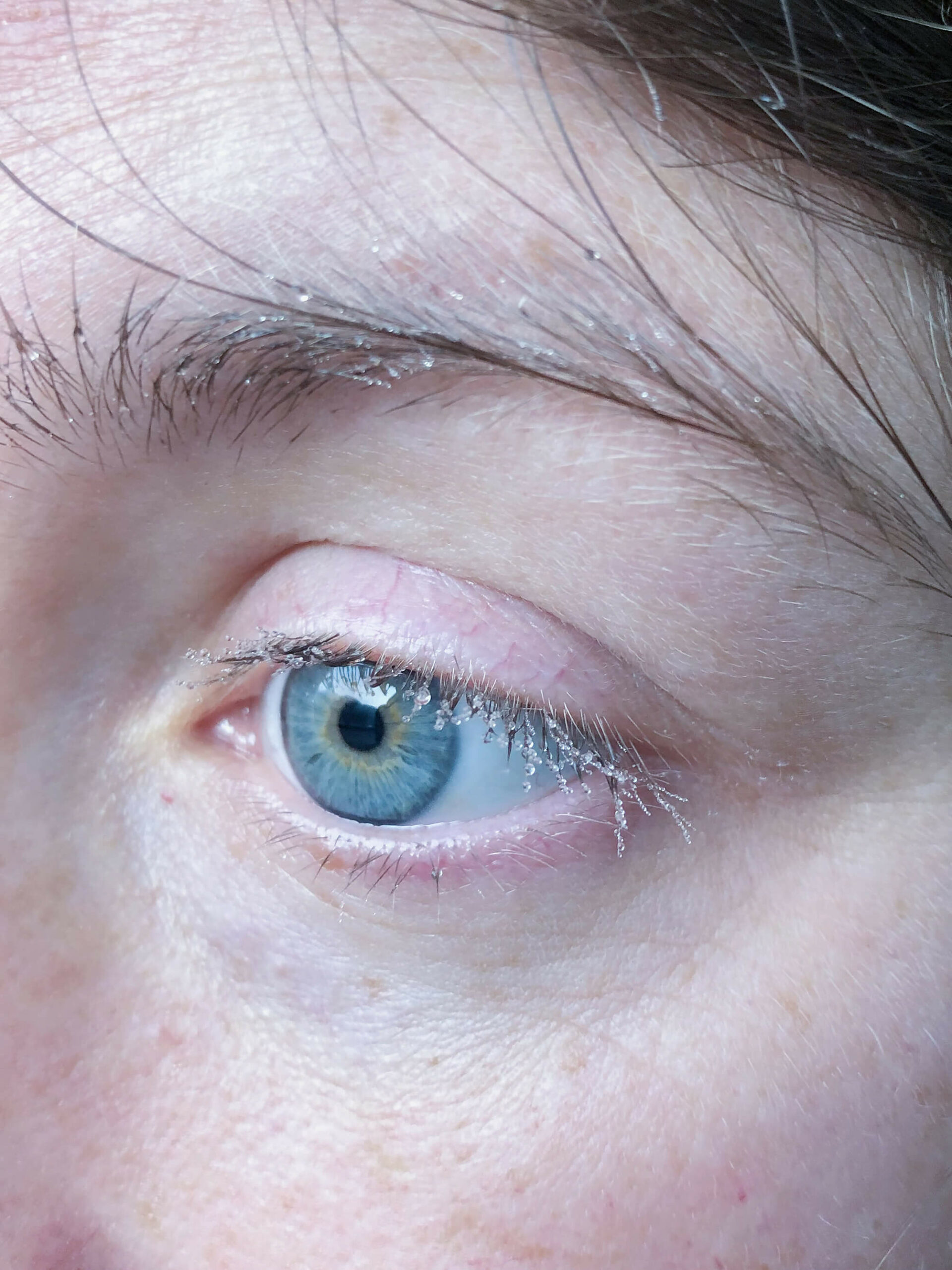
December, 1947. Rapid snowmelt coincides with torrential precipitation. At the bottom of the Thur valley, in Wildenstein, the water gathers.
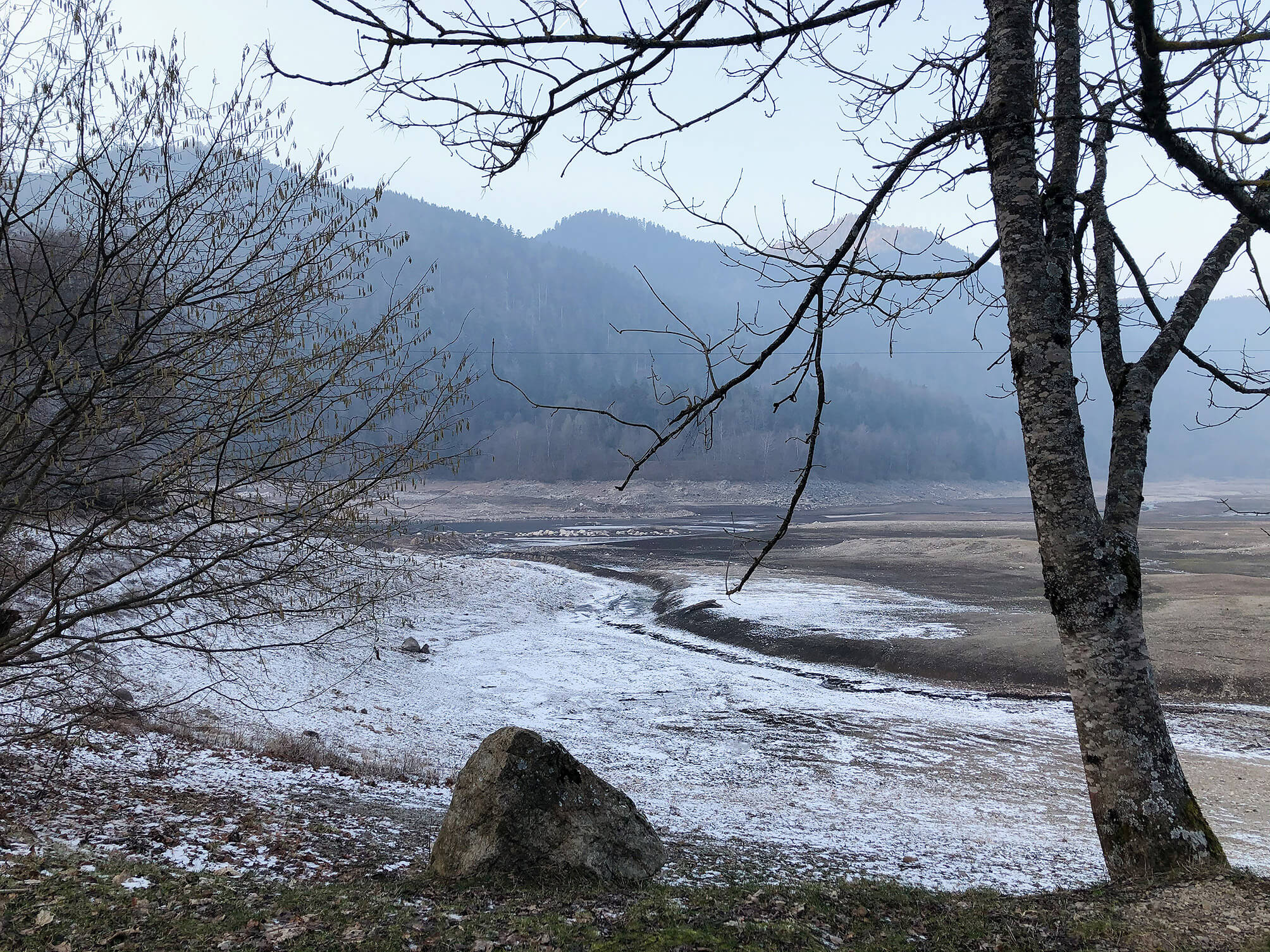
Cathedral glass, or Flemish glass, lets light through, but distorts visibility. It can show something or someone is present behind it, but not in detail. Often used in front doors, it marks the opaque edge between the private and the public sphere, laying bare their presence, without disclosing their contents.
A blue hand, or a spider (Cyriopagopus lividus), traces the cracks that testify to the fact that the jammed door had to be closed with force. The hinges need oiling. Cobalt blue tarantulas are said to be extremely defensive.


In 2020, the print versions of the Flemish telephone books ‘Gouden Gids’ and ‘Witte Gids’ (The Golden Guide and The White Guide), were published for the last time. From that year onwards, the directory could only be accessed and consulted online. The effect of the production of print telephone directories on the environment is considered to be enormous. As yearly updated, ubiquitous books, they were publications that soon turned superfluous. They led to piles of waste.
From the beginning of the 21st century on, both the print version and the online version had been available. This was a period of medium transition. During the last two decades, the print directory increasingly referred to the websites of the companies listed. To search for e.g. someone to inspect the heating installation, it was possible to find such a company’s website via the print directory, and consult the inspector’s services and price online, bypassing search engines such as Google and its complex algorithms. The telephone directory had a thematic and alphabetical order, combined with the possibility to buy additional advertising space.
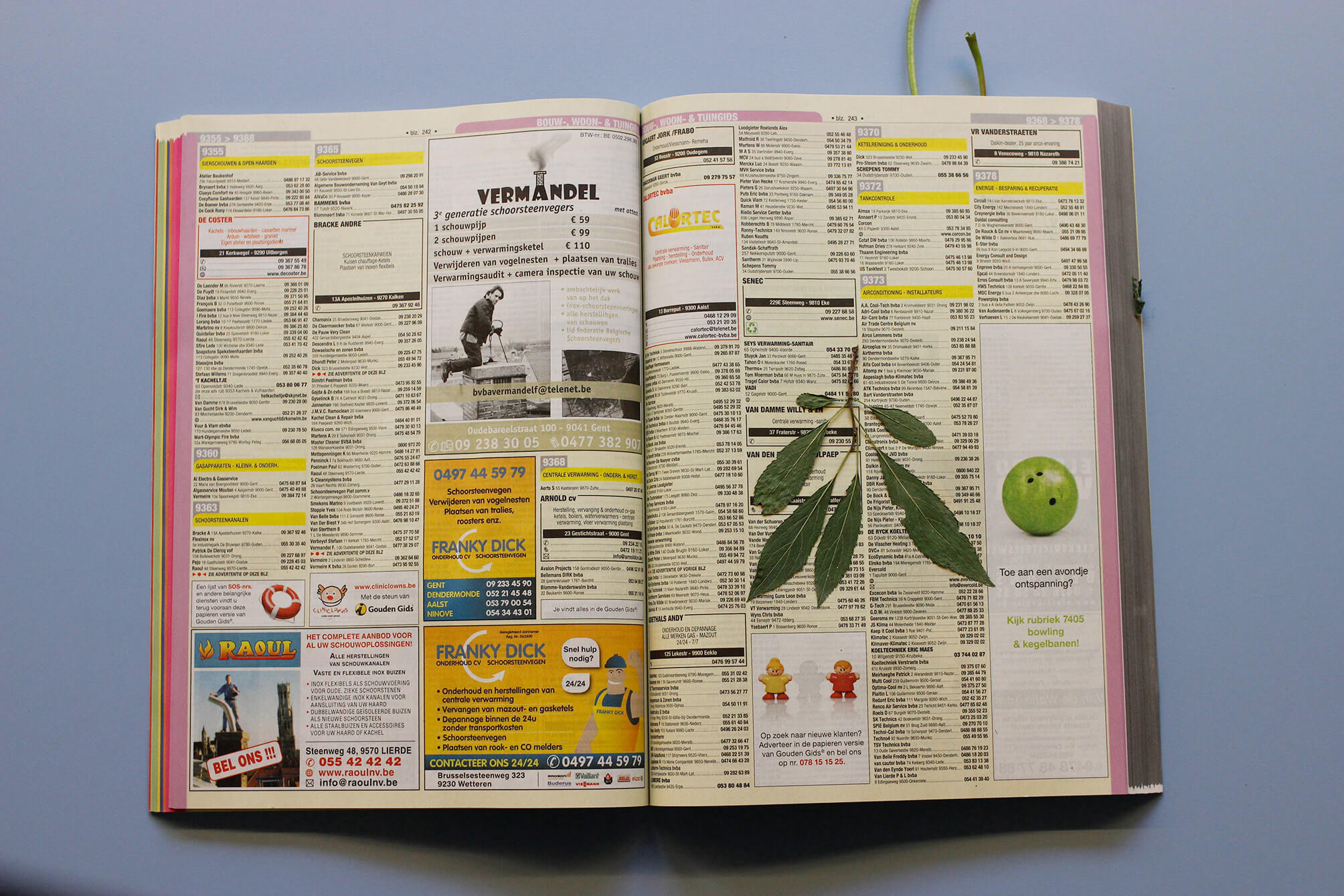
‘ORIGINAL. Rire de tout ce qui est original, le haïr, le bafouer, et l’exterminer si l’on peut.’
[‘ORIGINAL. Laugh with everything that’s original, hate it, scold it, exterminate it if you can.’]
Flaubert. Bouvard et Pécuchet (présenté par Raymond Queneau). Paris: Livre de poche, 1959 (with p. 232-233: dried leaf of a ginkgo tree, and p. 324-325: dried leaf of a birch tree), p. 429 [2,00 EUR, Librairie Vic-sur-Cère, August 2021].
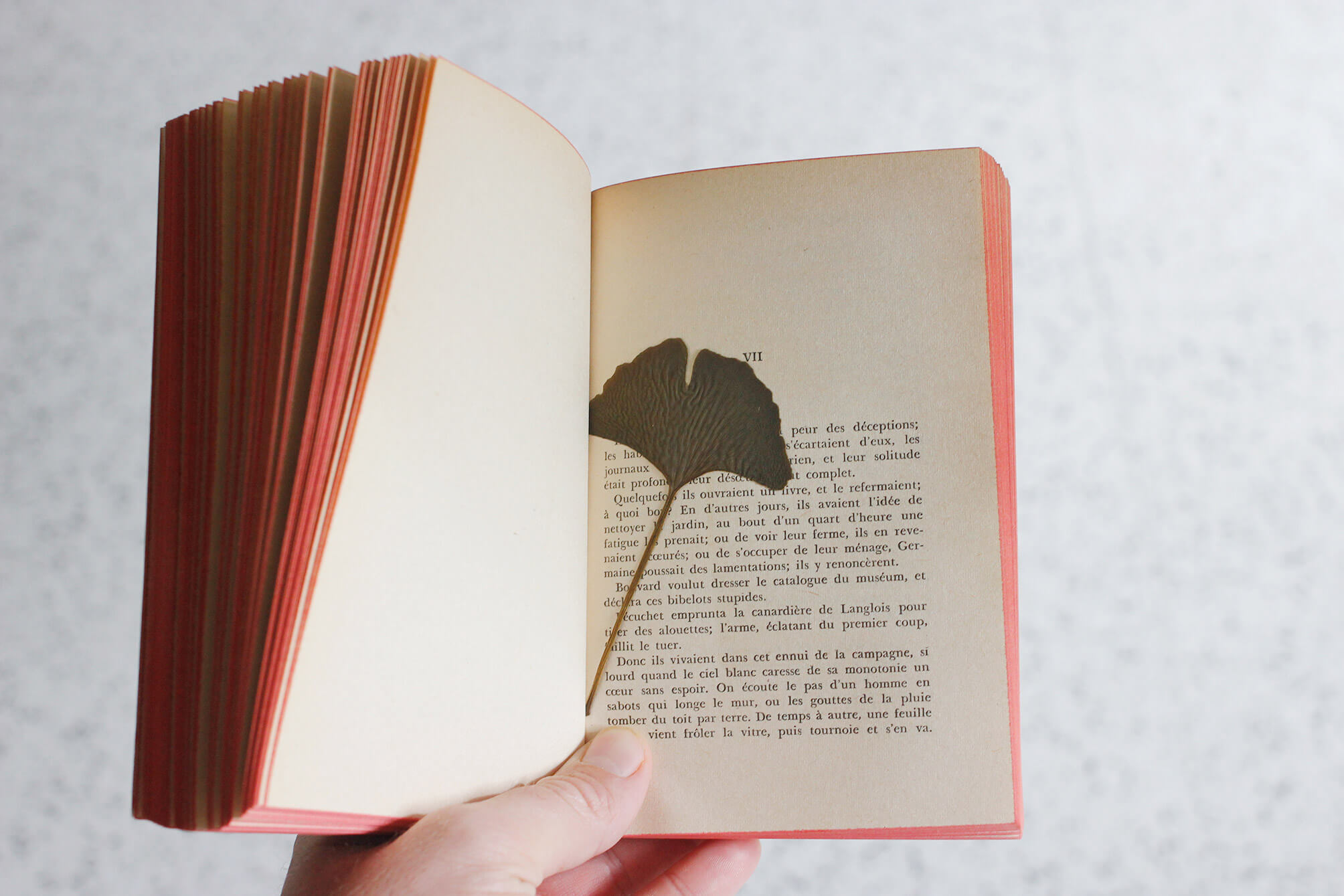
Ten years ago, in November, I drove up to Frisia – the northernmost province of The Netherlands. I was there to document the remains of air watchtowers: a network of 276 towers that were built in the fifties and sixties to warn the troops and population of possible aerial danger coming from the Soviet Union. It was very windy. The camera shook heavily. The poplars surrounding the concrete tower leaned heavily to one side.
I drove up to the seaside, a few kilometers farther. The wind was still strong when I reached the grassy dike that overlooked the kite-filled beach. I exposed the last piece of film left on the roll. Strong gusts of wind blew landwards.
Months later I didn’t bother to blow off the dust that had settled on the film before scanning it. A photograph without use, with low resolution, made for the sake of the archive’s completeness.
The dust on the film appears to be carried landwards, by the same gust of wind lifting the kites.
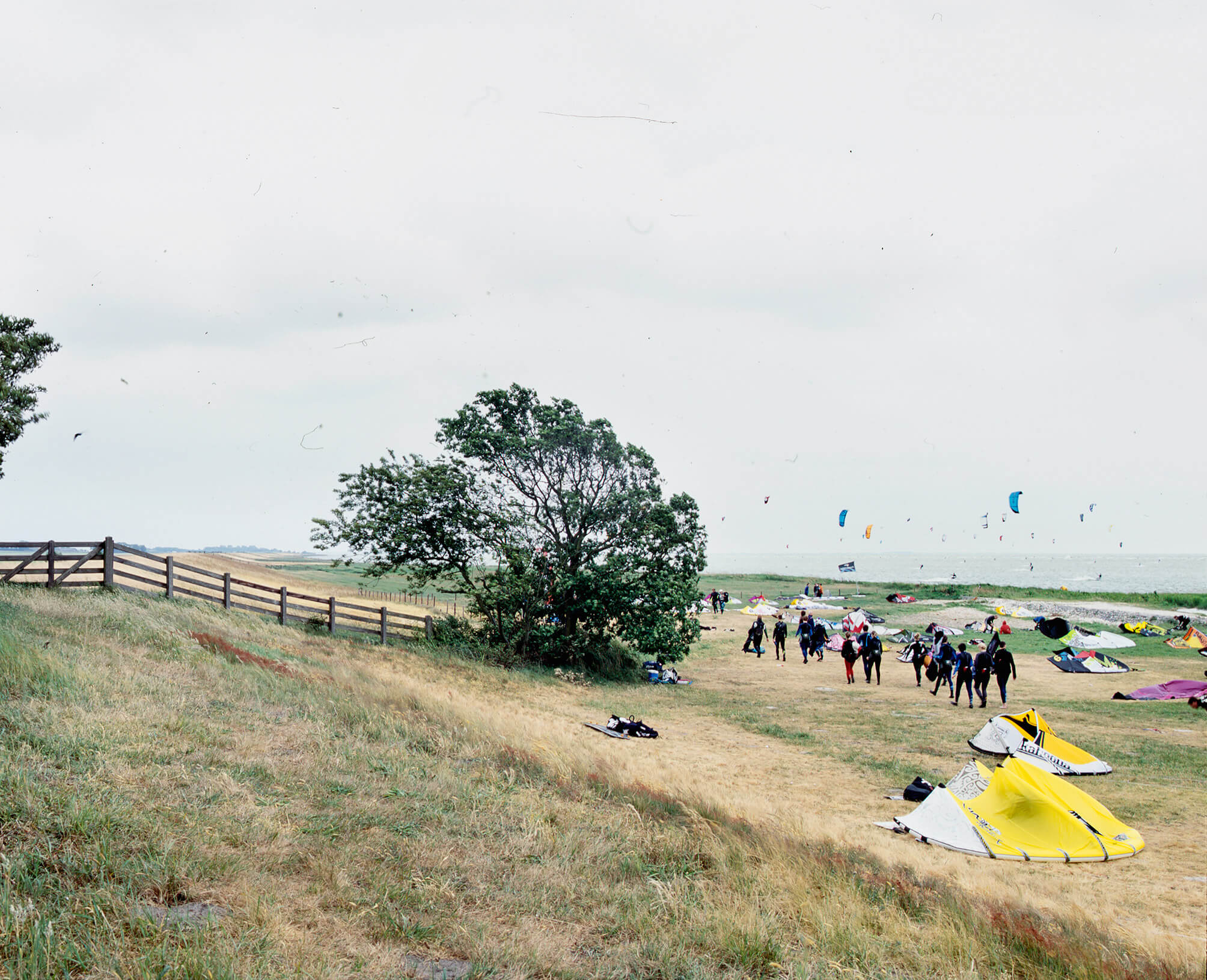
Article 75 of the Royal Decree containing general regulations for road traffic and the use of public roads, published in Het Belgisch Staatsblad on 9 December 1975, lists the rules for longitudinal markings indicating the edge of the roadway.
According to 75.1, there are two types of markings that indicate the actual edge of the roadway: a white, continuous stripe and a yellow interrupted line. The former is mainly used to make the edge of the roadway more visible; the latter indicates that parking along it is prohibited.
In 75.2, the decree focuses on markings that indicate the imaginary edge of the roadway. Only a broad, white, continuous stripe is permitted for this purpose. The part of the public road on the other side of this line is reserved for standing still and parking, except on motorways and expressways.
https://wegcode.be/wetteksten/secties/kb/wegcode/262-art75

Today I brought an old bedspring, the styrofoam the air-humidifier came in, a few bags of sawdust and some scrap pieces of plywood to the municipal recycling center. As I was waiting to mount the stairs to the scrap metal container, a gray-haired man wearing blue leather shoes, dark jeans and a checkered shirt was tipping – with relative ease – a weight bench over the edge of the container.
